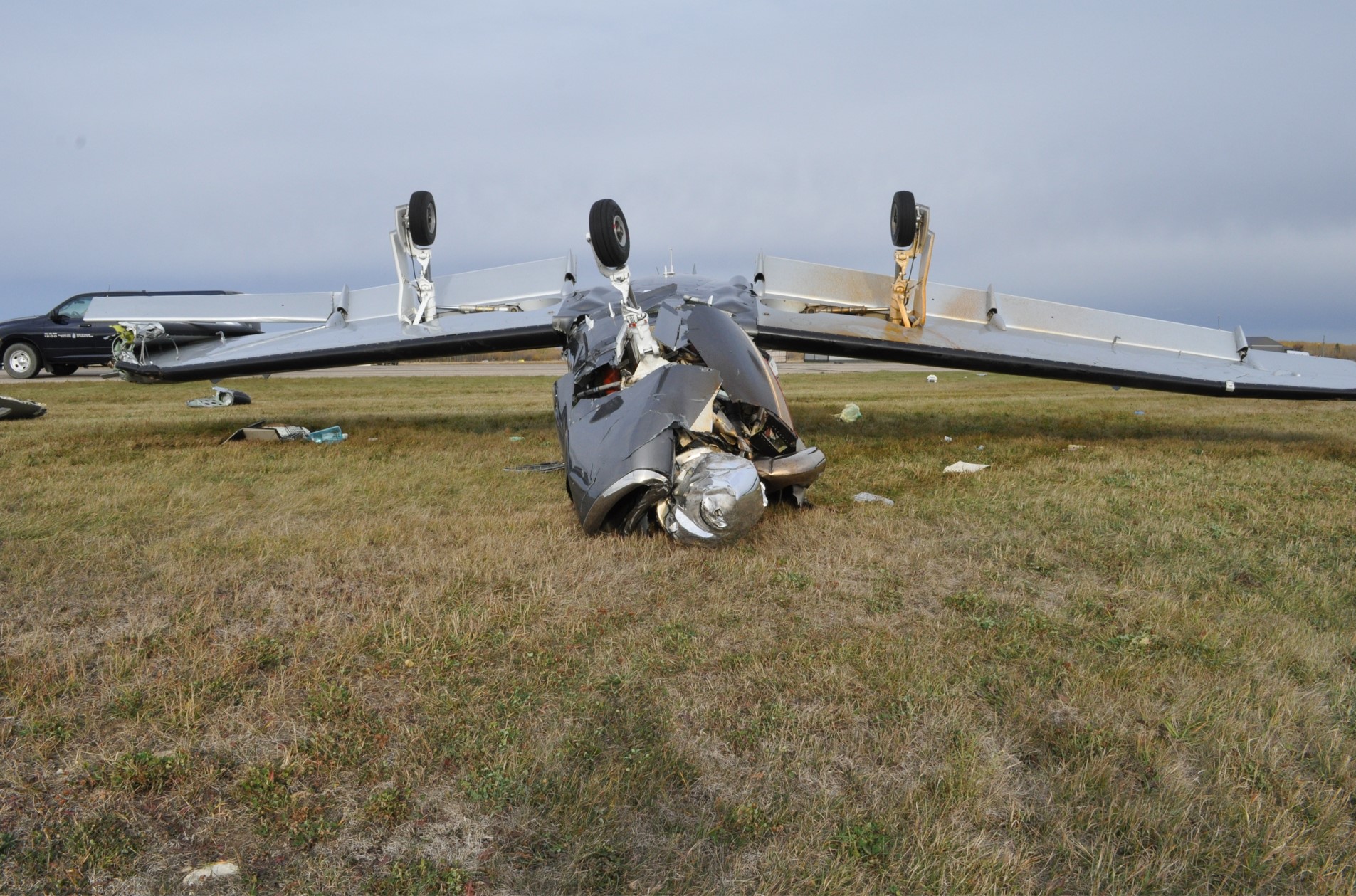Loss of control during landing
Privately registered
Daher TBM700 N (TBM 910), C-FFYM
Westlock Aerodrome, Alberta
The occurrence
On 10 October 2021, the privately registered Daher TBM700 N (registration C-FFYM, serial number 1190) was conducting an instrument flight rules flight from Vernon Airport, British Columbia, to Westlock Aerodrome, Alberta, with a stop at Calgary/Springbank Airport, Alberta, to pick up passengers, after which 1 pilot and 3 passengers were on board. At 1102:26 Mountain Daylight Time, while the aircraft was landing on Runway 28 at Westlock Aerodrome, the aircraft bounced and the pilot initiated a go-around. During the application of engine power for the go-around, the aircraft rolled to the left, struck the runway inverted, and came to rest on the runway’s south side.
The 3 passengers exited the aircraft through the main cabin door with the assistance of persons nearby. One passenger received serious injuries, and the other 2 had minor injuries. The pilot, who was seriously injured, was trapped in the cockpit for approximately 2 hours before first responders could safely rescue him from the wreckage. An emergency locator transmitter signal was received by the search and rescue satellite system. The aircraft was significantly damaged and there was no post-impact fire.
Media materials
News release
Unstable approach led to 2021 aircraft accident in Westlock, Alberta
Read the news release
Deployment notice
TSB deploys an investigator following a landing accident near Westlock, Alberta
Edmonton, Alberta, 10 October 2021 — The Transportation Safety Board is deploying an investigator to the site of a landing accident near Westlock, Alberta. The TSB will gather information and assess the occurrence.
Investigation information
Download high-resolution photos from the TSB Flickr page.
Class of investigation
This is a class 3 investigation. These investigations analyze a small number of safety issues, and may result in recommendations. Class 3 investigations are generally completed within 450 days. For more information, see the Policy on Occurrence Classification.
TSB investigation process
There are 3 phases to a TSB investigation
- Field phase: a team of investigators examines the occurrence site and wreckage, interviews witnesses and collects pertinent information.
- Examination and analysis phase: the TSB reviews pertinent records, tests components of the wreckage in the lab, determines the sequence of events and identifies safety deficiencies. When safety deficiencies are suspected or confirmed, the TSB advises the appropriate authority without waiting until publication of the final report.
- Report phase: a confidential draft report is approved by the Board and sent to persons and corporations who are directly concerned by the report. They then have the opportunity to dispute or correct information they believe to be incorrect. The Board considers all representations before approving the final report, which is subsequently released to the public.
For more information, see our Investigation process page.
The TSB is an independent agency that investigates air, marine, pipeline, and rail transportation occurrences. Its sole aim is the advancement of transportation safety. It is not the function of the Board to assign fault or determine civil or criminal liability.
